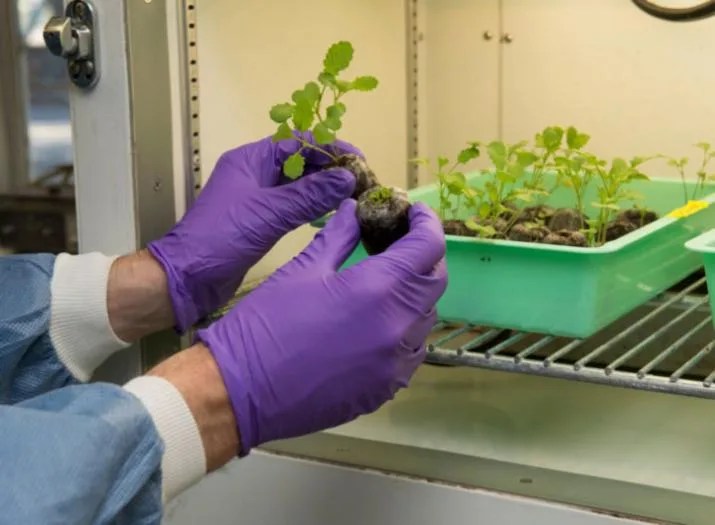Plant Biology Program
What We Study
At NASA Space Biology, we conduct functional and plant biological experiments to better understand the basics of physiology—how plants grow and acclimate—in conditions of microgravity and spaceflight. Is the lack of gravity encouraging or inhibiting plant growth? Are plants acclimating to microgravity onboard the ISS? Can we improve their genes? What does it take to get plants to grow in space? These are the questions we strive to answer.
Seed to Seed: Growing Multiple Generations of Plants in Space
Over the last half century, researchers have pushed back many of the barriers to the successful growth of plants in space regarding lighting requirements, humidity and temperature control, and atmospheric considerations (the lack of convective mixing, elevated CO2 levels, ethylene and other volatile organic compounds present in cabin air).
Scientist have confirmed that photosynthesis proceeds normally under microgravity conditions when adequate light, water, and nutrients are provided to the plants, and NASA-sponsored ground studies have shown that hydroponically grown crops can surpass world record yields, with commercial growers adopting some of these methodologies. Several plant species have been grown “seed-to-seed” in space (e.g., Arabidopsis, wheat, and soybean), and some plants seeds were returned to Earth and then sent back to space for second-generation studies. (Mashinsky, et al., 1994: PMID 11540174; Levinskikh, et al., 2001: PMID 11668959; Link, et al., 2003: PMID 14686438).
Watering systems for plants have been designed, and validated in space, but this is an area where major challenges still remain for the optimization of plant growth in microgravity since the lack of convective mixing has implications for the movement of water, oxygen and solutes through the root zone. As a consequence, most plants returned from microgravity have experienced some degree of hypoxia stress, and diffusion-limited movement of solutes have been shown to affect nutrient uptake by the roots.
Fundamental Research: Unlocking the Secrets of Botany
NASA has awarded numerous research studies during the last few decades that have contributed a wealth of knowledge of how plants respond and acclimate to the conditions of spaceflight. Additionally, the ability to incorporate the unique treatment of microgravity into experimental designs, which is not possible on Earth, has also allowed NASA-funded researchers to discover new aspects of plant physiology and metabolism heretofore unknown (with implications for enhancement of agriculture on Earth).
As a result, NASA researchers have uncovered new aspects of the basic perception, transduction, and response of plants to gravity. For example, by conducting experiments with plant tissue retrieved from spaceflight, space biologists have been able to detect differences in gene expression between the microgravity environment of space and 1-G environment of Earth and draw inferences on the types of enzymes and metabolic responses that occur in plants during growth and development in space.
Developing New Technology to Grow Plants in Space
Applied science at NASA takes our existing scientific knowledge and applies what we discover in space to practical applications on Earth. New technology coming out of the Space Biology program includes the Advanced Plant Habitat (APH). The APH is a large plant growth facility capable of long-duration plant development studies. This facility is a closed, controlled system that can monitor and measure temperature, relative humidity, carbon dioxide, and oxygen.
The APH has a sophisticated air filtration system, imaging capabilities, and a growth light assembly configured with red, blue, green, white, and far-red LED lights. The LED lights can be adjusted with varying intensities and scheduled to mimic the day-and-night cycles plants experience here on Earth.
The APH was built from its predecessor, Veggie, a self-contained fresh food production system. Veggie combines an array of red, blue, and green LED lights; a root mat; plant “pillows” containing seeds; and a special nutrient-enriched substrate mix devised by NASA. Our goal is to grow healthy food with minimal requirements. What we discover on the ISS using Veggie is telling us how to get the greatest plant yield using the least amount of soil, water, and nutrients in the least amount of space.
What we learn will have a major impact on food production by indoor growers back on Earth, who can use these technologies to accommodate extremes of climate and produce more nutritious food using less water and energy in a controlled environment.































